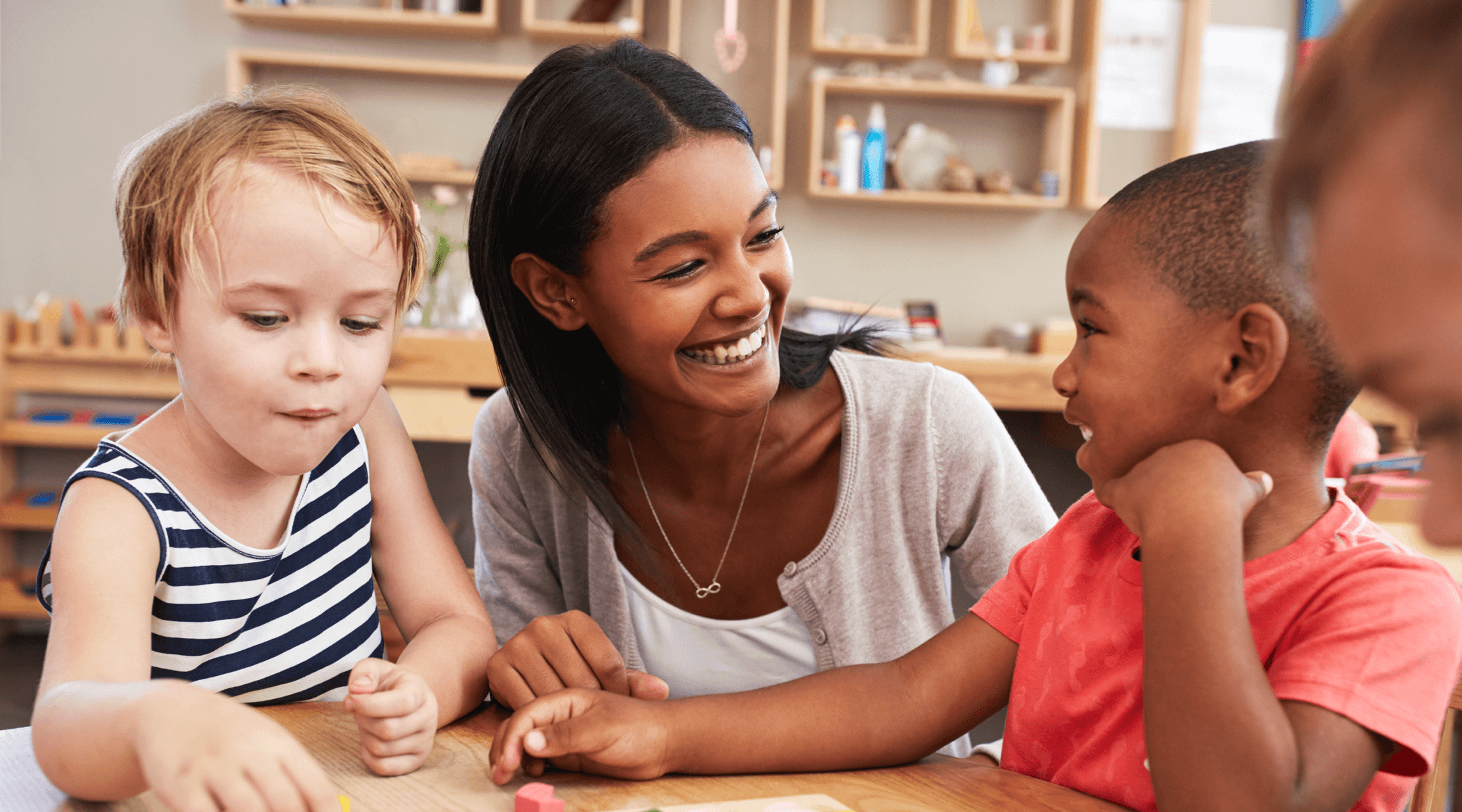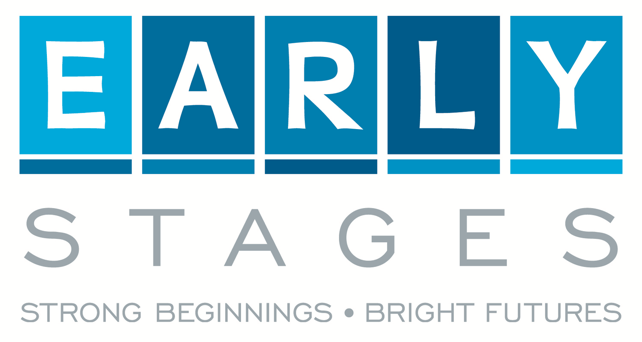

How a child plays, learns, speaks, acts, and moves provides important clues about their development. Most children reach specific developmental milestones by certain ages. Click on the tabs below to learn more about developmental milestones according to the Centers for Disease Control and Prevention (CDC). Download our Developmental Milestones handout in English, Spanish, French, Amharic, Vietnamese, and Mandarin at the bottom of the page.
BY 2 MONTHS, MOST CHILDREN...
Communication (Speech and Language)
- Make sounds other than crying
- React to loud sounds
Cognitive and Early Learning (Thinking, Problem-Solving, and Foundational Academic Skills)
- Watch you as you move
- Look at a toy for several seconds
Physical (Movement, Fine Motor Skills, and Sensory Processing)
- Hold their head up when on their tummy
- Move both arms and both legs
- Open hands briefly
BY 4 MONTHS, MOST CHILDREN...
Communication (Speech and Language)
- Make sounds like “oooo” and “aahh” (cooing)
- Make sounds back when you talk to them
- Turn their head towards the sound of your voice
Cognitive and Early Learning (Thinking, Problem-Solving, and Foundational Academic Skills)
- If hungry, open mouth when they see breast or bottle
- Look at their hands with interest
Physical (Movement, Fine Motor Skills, and Sensory Processing)
- Hold head steady without support when you are holding them
- Hold a toy when you put it in their hands
- Use their arms to swing at toys
- Bring hands to mouth
- Push up onto elbows/forearms when on tummy
BY 6 MONTHS, MOST CHILDREN...
Communication (Speech and Language)
- Take turns making sounds with you
- Blow raspberries (sticking tongue out and blowing)
- Make squealing noises
Cognitive and Early Learning (Thinking, Problem-Solving, and Foundational Academic Skills)
- Put things in their mouth to explore them
- Reach to grab a toy they want
- Close lips to show they don’t want more food
Physical (Movement, Fine Motor Skills, and Sensory Processing)
- Roll from tummy to back
- Push up with straight arms when on tummy
- Lean on hands to support themselves when sitting
BY 9 MONTHS, MOST CHILDREN...
Communication (Speech and Language)
- Make a lot of different sounds like “mamamama” and “bababababa”
- Lift arms up to be picked up
Cognitive and Early Learning (Thinking, Problem-Solving, and Foundational Academic Skills)
- Look for objects when dropped out of sight (like a spoon or toy)
- Bang two things together
Physical (Movement, Fine Motor Skills, and Sensory Processing)
- Get to a sitting position alone
- Move things from one hand to the other hand
- Use fingers to rake food towards themselves
- Sit without support
BY 1 YEAR, MOST CHILDREN...
Communication (Speech and Language)
- Wave goodbye
- Call a parent “mama” or “dada” or another special name
- Understand when you say “no,” pausing briefly or stopping when you say it
Early Learning (Thinking, Problem-Solving, and Foundational Academic Skills)
- Put something in a container, like a block in a cup
- Look for things they see you hide, like a toy under a blanket
Physical (Movement, Fine Motor Skills, and Sensory Processing)
- Pull up to stand
- Walk, holding on to furniture
- Drink from a cup without a lid, as you hold it
- Pick things up between thumb and pointer finger, like small bits of food
BY 18 MONTHS, MOST CHILDREN...
Communication (Speech and Language)
- Try to say three or more words, besides “mama” or “dada”
- Follow one-step directions without any gestures, like giving you the toy when you say, “give it to me.”
Early Learning (Thinking, Problem-Solving, and Foundational Academic Skills)
- Copy you doing chores, like sweeping with a broom
- Play with toys in a simple way, like pushing a toy car
Physical (Movement, Fine Motor Skills, and Sensory Processing)
- Walk without holding on to anyone or anything
- Scribble
- Drink from a cup without a lid and may spill sometimes
- Feed themselves with their fingers
- Try to use a spoon
- Climb on and off a couch or chair without help
BY 30 MONTHS, MOST CHILDREN...
Communication (Speech and Language)
- Say about 50 words
- Say two or more words, with one action word, like “doggie run”
- Name things in a book when you point and ask, “what is this?”
- Say words like “I,” “me,” or “we”
Early Learning (Thinking, Problem-Solving, and Foundational Academic Skills)
- Use things to pretend, like feeding a block to a doll as if it were food
- Show simple problem-solving skills, like standing on a small stool to reach something
- Follow two-step instructions, like “put the toy down and close the door.”
- Show they know at least one color, like pointing to a red crayon when you ask, “which one is red?”
Physical (Movement, Fine Motor Skills, and Sensory Processing)
- Use hands to twist things, like turning doorknobs or unscrewing lids
- Take some clothes off alone, like loose pants or an open jacket
- Jump off the ground with both feet
- Turn book pages, one at a time, when you read to them
BY 2 YEARS, MOST CHILDREN...
Communication (Speech and Language)
- Point to things in a book when you ask questions like “where is the bear?”
- Say at least two words together, like “more milk”
- Point to at least two body parts when you ask them to show you
- Use more gestures than just waving and pointing, like blowing a kiss or nodding yes
Early Learning (Thinking, Problem-Solving, and Foundational Academic Skills)
- Hold something in one hand while using the other hand; for example, holding a container and taking the lid off
- Try to use switches, knobs, or buttons on a toy
- Play with more than one toy at the same time, like putting toy food on a toy plate
Physical (Movement, Fine Motor Skills, and Sensory Processing)
- Kick a ball
- Run
- Walk (not climb) up a few stairs with or without help
- Eat with a spoon
BY 3 YEARS, MOST CHILDREN...
Communication (Speech and Language)
- Talk with you in conversation using at least two back-and-forth exchanges
- Ask “who,” “what,” “where,” or “why” questions, like “where is mommy/daddy?”
- Say what action is happening in a picture or book when asked, like “running,” “eating,” or “playing” when asked
- Talk well enough for others to understand most of the time
Early Learning (Thinking, Problem-Solving, and Foundational Academic Skills)
- Draw a circle when you show them how
- Avoid touching hot objects, like a stove, when you warn them
Physical (Movement, Fine Motor Skills, and Sensory Processing)
- String items together, like large beads or macaroni
- Put on some clothes alone, like loose pants or a jacket
- Use a fork
BY 4 YEARS, MOST CHILDREN...
Communication (Speech and Language)
- Say sentences with four or more words
- Say some words from a song, story, or nursery rhyme
- Talk about at least one thing that happened during their day, like “I played soccer.”
- Answer simple questions like “what is a coat for?” or “what is a crayon for?”
Early Learning (Thinking, Problem-Solving, and Foundational Academic Skills)
- Name a few colors of items
- Tell what comes next in a well-known story
- Draw a person with three or more body parts
Physical (Movement, Fine Motor Skills, and Sensory Processing)
- Catch a large ball most of the time
- Serve themselves food or pour water with adult supervision
- Unbutton some buttons
- Hold a crayon or pencil between fingers and thumb (not a fist)
BY 5 YEARS, MOST CHILDREN...
Communication (Speech and Language)
- Tell a story they heard or made up with at least two events
- Answer simple questions about a book or story after you read or tell it to them
- Keep a conversation going with more than three back-and-forth exchanges
- Use or recognize simple rhymes (bat-cat, ball-tall)
Early Learning (Thinking, Problem-Solving, and Foundational Academic Skills)
- Count to 10
- Name some numbers between 1 and 5 when you point to them
- Use words about time, like “yesterday,” “tomorrow,” “morning,” or “night”
- Pay attention for 5 to 10 minutes during activities, like story time or making arts and crafts
- Write some letters in their name
- Name some letters when you point to them
Physical (Movement, Fine Motor Skills, and Sensory Processing)
- Button some buttons
- Hop on one foot



